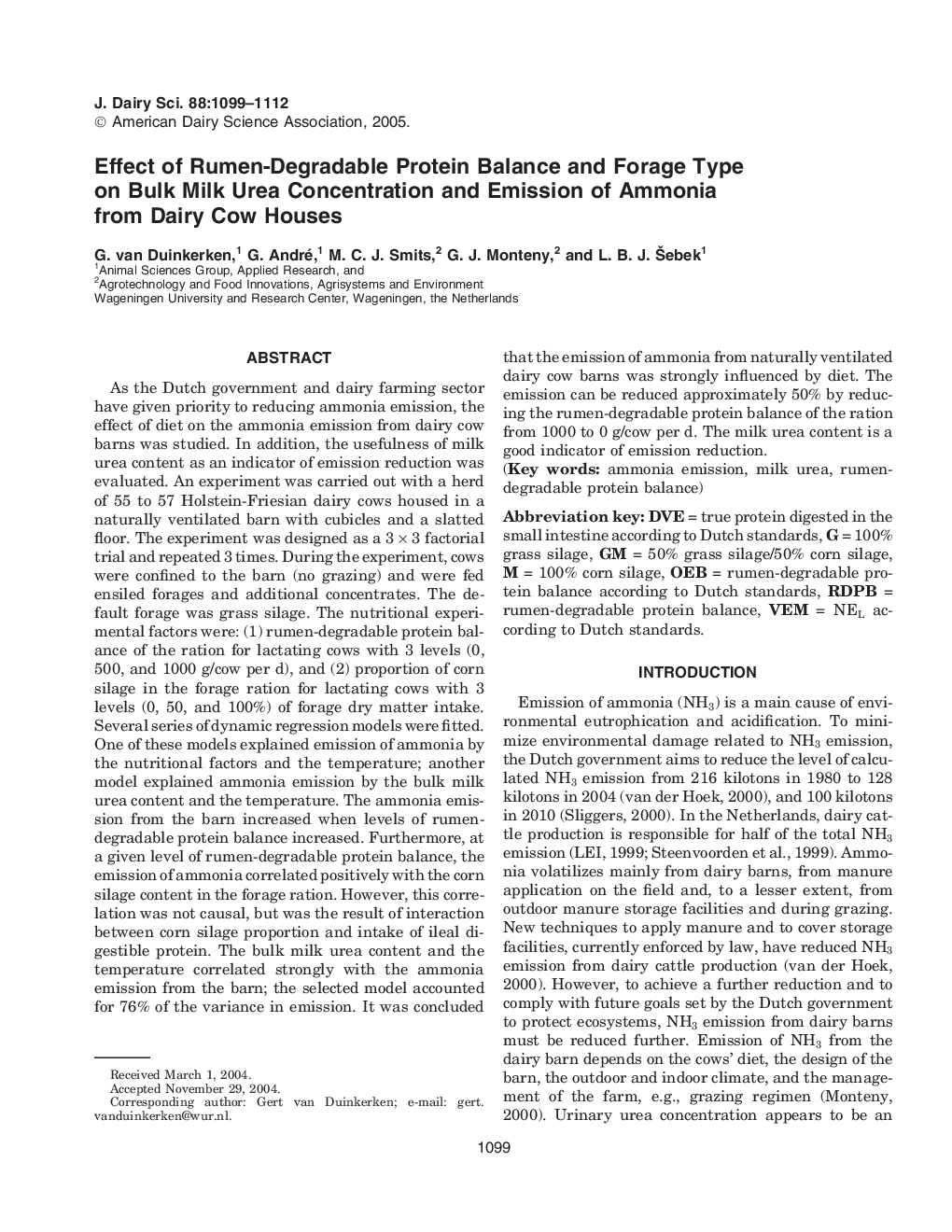| کد مقاله | کد نشریه | سال انتشار | مقاله انگلیسی | نسخه تمام متن |
|---|---|---|---|---|
| 8981145 | 1108139 | 2005 | 14 صفحه PDF | دانلود رایگان |
عنوان انگلیسی مقاله ISI
Effect of Rumen-Degradable Protein Balance and Forage Type on Bulk Milk Urea Concentration and Emission of Ammonia from Dairy Cow Houses
دانلود مقاله + سفارش ترجمه
دانلود مقاله ISI انگلیسی
رایگان برای ایرانیان
موضوعات مرتبط
علوم زیستی و بیوفناوری
علوم کشاورزی و بیولوژیک
علوم دامی و جانورشناسی
پیش نمایش صفحه اول مقاله

چکیده انگلیسی
As the Dutch government and dairy farming sector have given priority to reducing ammonia emission, the effect of diet on the ammonia emission from dairy cow barns was studied. In addition, the usefulness of milk urea content as an indicator of emission reduction was evaluated. An experiment was carried out with a herd of 55 to 57 Holstein-Friesian dairy cows housed in a naturally ventilated barn with cubicles and a slatted floor. The experiment was designed as a 3Â ÃÂ 3 factorial trial and repeated 3 times. During the experiment, cows were confined to the barn (no grazing) and were fed ensiled forages and additional concentrates. The default forage was grass silage. The nutritional experimental factors were: (1) rumen-degradable protein balance of the ration for lactating cows with 3 levels (0, 500, and 1000 g/cow per d), and (2) proportion of corn silage in the forage ration for lactating cows with 3 levels (0, 50, and 100%) of forage dry matter intake. Several series of dynamic regression models were fitted. One of these models explained emission of ammonia by the nutritional factors and the temperature; another model explained ammonia emission by the bulk milk urea content and the temperature. The ammonia emission from the barn increased when levels of rumen-degradable protein balance increased. Furthermore, at a given level of rumen-degradable protein balance, the emission of ammonia correlated positively with the corn silage content in the forage ration. However, this correlation was not causal, but was the result of interaction between corn silage proportion and intake of ileal digestible protein. The bulk milk urea content and the temperature correlated strongly with the ammonia emission from the barn; the selected model accounted for 76% of the variance in emission. It was concluded that the emission of ammonia from naturally ventilated dairy cow barns was strongly influenced by diet. The emission can be reduced approximately 50% by reducing the rumen-degradable protein balance of the ration from 1000 to 0 g/cow per d. The milk urea content is a good indicator of emission reduction.
ناشر
Database: Elsevier - ScienceDirect (ساینس دایرکت)
Journal: Journal of Dairy Science - Volume 88, Issue 3, March 2005, Pages 1099-1112
Journal: Journal of Dairy Science - Volume 88, Issue 3, March 2005, Pages 1099-1112
نویسندگان
G. van Duinkerken, G. André, M.C.J. Smits, G.J. Monteny, L.B.J. Å ebek,